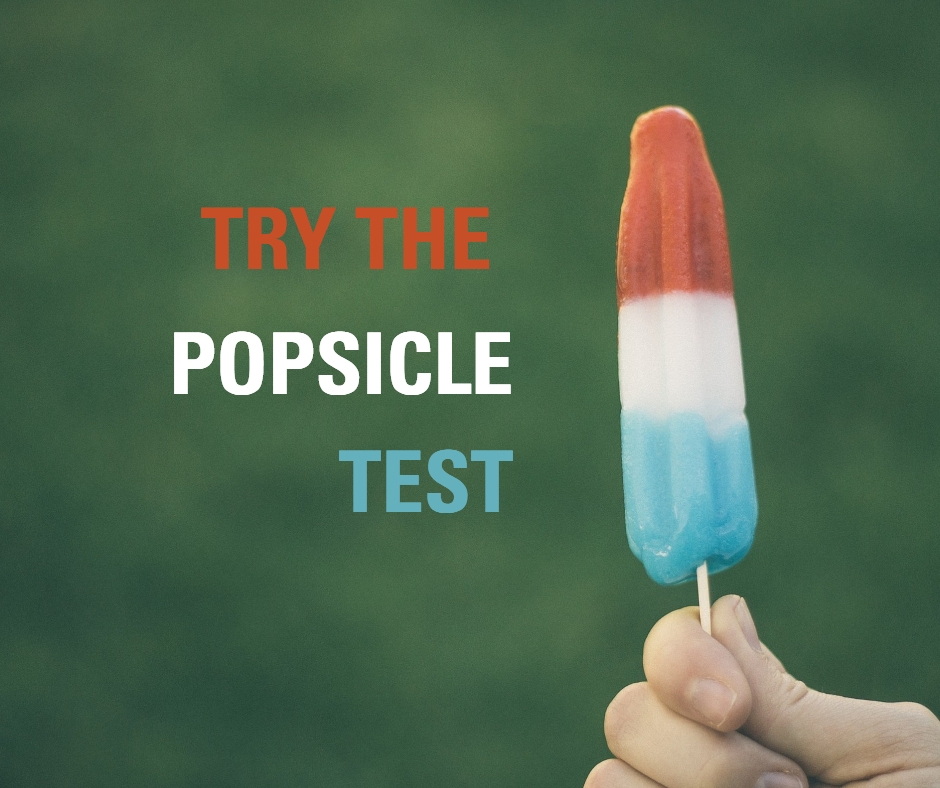How to address walkability with traffic safety solutions
When analyzing walkability, it is important to get on the ground and see your city from the perspectives of those who walk it. To help explore walkability for children, find your inner child (easier for some than others!) and imagine what it would be like to walk to various destinations within a reasonable distance. Here are some ways to analyze walkability for children and address the issues you find.
Could you walk to buy a popsicle?
 A famous test of walkability, this analysis is simple: walk to the nearest convenience store or market, buy a popsicle, and get it home before it melts—and see how comfortable you feel. Could an 8-year-old kid do this without an adult? You can even take your own child or a friend’s along with you and ask them how they feel. Watch their body language, too. And consider your own behavior: are you nervous for the child when they approach an intersection or when cars rush by?
A famous test of walkability, this analysis is simple: walk to the nearest convenience store or market, buy a popsicle, and get it home before it melts—and see how comfortable you feel. Could an 8-year-old kid do this without an adult? You can even take your own child or a friend’s along with you and ask them how they feel. Watch their body language, too. And consider your own behavior: are you nervous for the child when they approach an intersection or when cars rush by?
Could you walk to school?
Walk to a nearby school as kids are arriving for a school day. Did you see kids walking or biking along the way? Consider what the route is like for you and if you would feel safe letting a child walk—either with you or alone.
When you get to the school, look around. Are parents dropping kids off? If so, what is their driving etiquette like? How fast are other drivers passing? Consider if some children are taking school buses. Check out smaller issues too, including the design of the fencing, sidewalks, crosswalks, and drop-off area to see if they could be making walking to school more challenging.
Are there other places close by to walk to?
Consider if the neighborhood has other kid-friendly destinations, like parks, a library, or a movie theater. If so, how easy are they to get to? How many intersections would a child have to cross and how busy are they? Check out features like sidewalks, crosswalks, lighting, and bike lanes.
Take steps to help
Above all, ensuring sidewalks and lighting are in place will be a good place to start with any upgrades, but if these stretch your budget, starting with beacons and signs can be more cost-effective.
 Flashing beacons that blink 24-7 could help alert drivers to stop signs in the neighborhood, helping kids cross more safely on their way to the park, school, or to get that tasty popsicle. For mid-block crosswalks—which may be part of the most direct route to the store—rectangular rapid-flashing beacons can help attract driver attention.
Flashing beacons that blink 24-7 could help alert drivers to stop signs in the neighborhood, helping kids cross more safely on their way to the park, school, or to get that tasty popsicle. For mid-block crosswalks—which may be part of the most direct route to the store—rectangular rapid-flashing beacons can help attract driver attention.
School zone speed limit signage is easier to spot with school zone flashing beacons. Drivers may also need a reminder as they near the school zone, which can be achieved in many cases with radar speed signs that help drivers self-correct. These devices can also be effective in other residential areas where the speed limit changes or before a sharp turn to help alert traffic to the change in driving conditions.
Many neighborhoods lack kid-friendly walking destinations, especially in suburbia. Rezoning is a long-term solution to help increase the mixture of land uses. In the short term, however, cities can rotate programs around different neighborhoods to bring the activities to the kids instead—think food truck festivals or community BBQs in the park.
When walkability is improved for children, it’s improved for everyone. Learn more about our walkability solutions.
This blog post is adapted from an article from Strong Towns.
